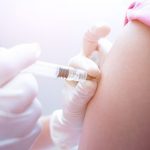
Concerns about “long-haul” symptoms in COVID-19 survivors may be reignited by a new study: It finds that 3 out of 4 patients from Wuhan, China — where the pandemic originated — were still suffering at least one lingering health problem six months later. The study from China involved more than 1,700 patients first diagnosed with the virus in Wuhan between January and May, and then followed to June and September. Researchers report that 76% of these patients had at least one symptom six months after symptoms began. The most common symptoms were fatigue or muscle weakness (63%) along with trouble sleeping (26%) and anxiety or depression (23%). “Because COVID-19 is such a new disease, we are only beginning to understand some of its long-term effects on patients’ health,” said researcher Dr. Bin Cao, from the National Center for Respiratory Medicine at the China-Japan Friendship Hospital and Capital Medical University, both in Beijing. His team published the findings in The Lancet journal Jan. 8. “Our analysis indicates that most patients continue to live with at least some of the effects of the virus after leaving the hospital, and highlights a need for post-discharge care, particularly for those who experience severe infections,” Cao said in a journal news release. “Our work also underscores the importance of conducting longer follow-up studies in larger populations in order to understand… read on > read on >




















-300x200.jpg)










